By default the foundation vents are placed a fixed distance (user driven) from the foundation corners. Once the stemwall is created it is not very hard to move the vent manually if required.
- Welcome to Medeek Forum.
This section allows you to view all posts made by this member. Note that you can only see posts made in areas you currently have access to.
#2131
Medeek Foundation Plugin / Re: Development and Updates for the Medeek Foundation Plugin
June 11, 2017, 11:56:01 AM #2132
Medeek Foundation Plugin / Re: Development and Updates for the Medeek Foundation Plugin
June 10, 2017, 09:53:41 PM
Tutorial 1:
#2133
Medeek Truss Plugin / Re: Development and Updates for the Medeek Truss Plugin
June 10, 2017, 05:23:38 PM
Added plywood gusset plates for raised heel common fink trusses.

View model here:
https://3dwarehouse.sketchup.com/model/b21431bc-c3b6-4038-a81e-f27fc78f69b1/WGC-Truss
Note that there are currently no calcs associated with these WGC trusses. If you are going to build your own trusses I would strongly suggest you find a local structural engineer to assist in specifying the plates sizes and fasteners, especially if the truss span is greater than 16 feet and your snow loads are greater than 25 psf in your region.
When I engineer WGC trusses I will also call out a waterproof glue as well however I don't take the glue's strength into the calculations. This provides another margin of safety and also the rigidity of a glued and nailed gusset plated truss is superior in my opinion to your typical MPC truss.
Every member is critical in a truss, however some are more stressed than others. Your top and bottom chords should never be anything less than a No. 2 DF. I would suggest No. 1, No. 1 & Btr. or Select Structural. The webs of a typical truss are usually stressed quite a bit less than the chords and sometimes you can get away with stud grade lumber but I would suggest DF No. 2 on all webs as well. A strategically placed knot can easily ruin an entire truss.
Just as important as the materials is the level of care taken in cutting the members and assembling the truss. All joints should fit tightly together so that members in compression can bear directly on their adjacent members. Also realize that tension members may experience load reversals in high wind or seismic events so even tension members are no exception to the rule.
The correct fasteners and fastener size is critical. The nails will be in single or double shear and the joint connection is relying entirely on this shear strength of the fasteners to hold together. Fasteners too close to the edge or ends of a member are not as effective, so fastener placement is also critical.
I am curious how the two truss types would compare in a burn test, which one would stay intact longer. My suspicion is that the plywood gussets would char and slowly burn however the metal plates would heat up and loose their strength quickly and fail.
I know most people don't do this but I would personally stress test each truss before installing it on the intended structure. Mostly what you are looking for is a uniform deflection across all the trusses so that they can load balance properly. If a truss is defective this test should help ferret out this data even though visually the truss may look acceptable.

View model here:
https://3dwarehouse.sketchup.com/model/b21431bc-c3b6-4038-a81e-f27fc78f69b1/WGC-Truss
Note that there are currently no calcs associated with these WGC trusses. If you are going to build your own trusses I would strongly suggest you find a local structural engineer to assist in specifying the plates sizes and fasteners, especially if the truss span is greater than 16 feet and your snow loads are greater than 25 psf in your region.
When I engineer WGC trusses I will also call out a waterproof glue as well however I don't take the glue's strength into the calculations. This provides another margin of safety and also the rigidity of a glued and nailed gusset plated truss is superior in my opinion to your typical MPC truss.
Every member is critical in a truss, however some are more stressed than others. Your top and bottom chords should never be anything less than a No. 2 DF. I would suggest No. 1, No. 1 & Btr. or Select Structural. The webs of a typical truss are usually stressed quite a bit less than the chords and sometimes you can get away with stud grade lumber but I would suggest DF No. 2 on all webs as well. A strategically placed knot can easily ruin an entire truss.
Just as important as the materials is the level of care taken in cutting the members and assembling the truss. All joints should fit tightly together so that members in compression can bear directly on their adjacent members. Also realize that tension members may experience load reversals in high wind or seismic events so even tension members are no exception to the rule.
The correct fasteners and fastener size is critical. The nails will be in single or double shear and the joint connection is relying entirely on this shear strength of the fasteners to hold together. Fasteners too close to the edge or ends of a member are not as effective, so fastener placement is also critical.
I am curious how the two truss types would compare in a burn test, which one would stay intact longer. My suspicion is that the plywood gussets would char and slowly burn however the metal plates would heat up and loose their strength quickly and fail.
I know most people don't do this but I would personally stress test each truss before installing it on the intended structure. Mostly what you are looking for is a uniform deflection across all the trusses so that they can load balance properly. If a truss is defective this test should help ferret out this data even though visually the truss may look acceptable.
#2134
Medeek Truss Plugin / Re: Development and Updates for the Medeek Truss Plugin
June 09, 2017, 11:32:52 PM
Version 1.9.1 - 06.09.2017
- Added plywood gusset plates for common fink trusses.
- Enabled a "WOOD" plate type option in the global settings.
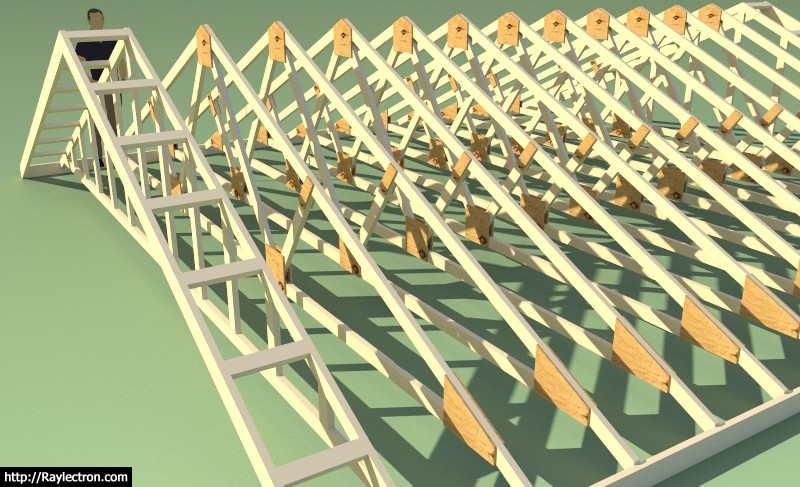
*Note that the wood gussets are currently only available for the Fink truss, if anyone needs them enabled for a different truss please let me know.
- Added plywood gusset plates for common fink trusses.
- Enabled a "WOOD" plate type option in the global settings.

*Note that the wood gussets are currently only available for the Fink truss, if anyone needs them enabled for a different truss please let me know.
#2135
Medeek Truss Plugin / Re: Development and Updates for the Medeek Truss Plugin
June 08, 2017, 07:09:02 AM
In the global settings I've added a setting to switch between metal and wood connector plates. Initially I will only enable wood plates for some of the more typical common trusses (ie. fink, howe, queen and king), if this feature proves to be popular I may enable it for more truss types.
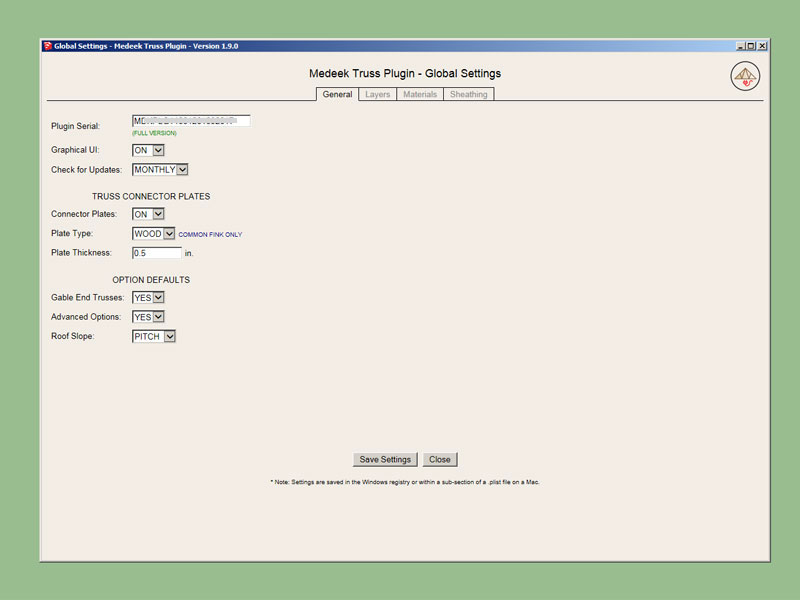

#2136
Medeek Foundation Plugin / Re: Development and Updates for the Medeek Foundation Plugin
June 05, 2017, 10:11:49 PM
Added "FPSF" option to polygon stemwall foundations.
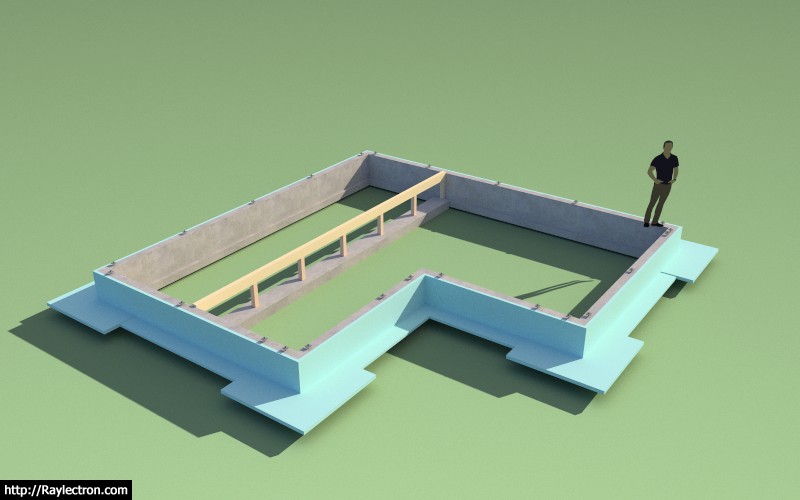
Now I've thoroughly beaten the FPSF option to death, the only thing I might add in later is a global setting to change the insulation color to pink, blue or white.

Now I've thoroughly beaten the FPSF option to death, the only thing I might add in later is a global setting to change the insulation color to pink, blue or white.
#2137
Medeek Foundation Plugin / Re: Development and Updates for the Medeek Foundation Plugin
June 05, 2017, 02:07:25 PM
An octagon slab on grade (FPSF). Note that the angle of the corners is 225 degrees, any less and the corner treatment would go away.
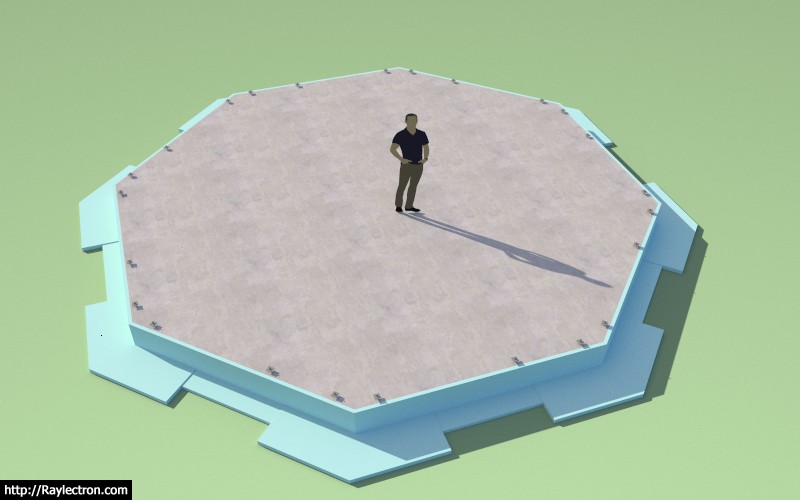

#2138
Medeek Foundation Plugin / Re: Development and Updates for the Medeek Foundation Plugin
June 05, 2017, 12:00:48 AM
Added "FPSF" option to polygon slab-on-grade foundations:
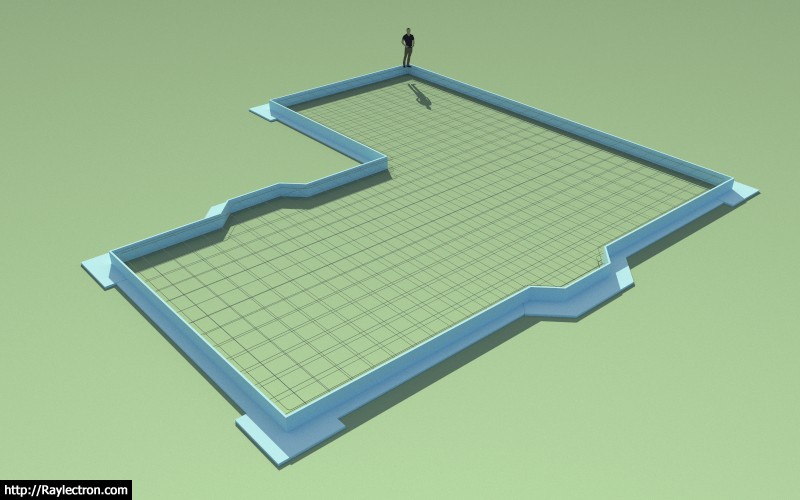

#2139
Medeek Foundation Plugin / Re: Development and Updates for the Medeek Foundation Plugin
June 04, 2017, 12:36:51 PM
I haven't enabled it for polygon shaped stemwall and slabs yet, that is still a work in progress. Too much to do and not enough time to do it all.
#2140
Medeek Foundation Plugin / Re: Development and Updates for the Medeek Foundation Plugin
June 04, 2017, 12:13:50 AM
Working on the square/rectangle spread footing tool:
I will start with wood posts as an option with the following sub-options for the wood post:
Post Size: 4x4, 4x6, 6x6, 6x8, 8x8
Post Height (in.)
Post Base: None, ABA, ABU, ABW, CBSQ
Post Cap: None, CCQ, ECCQ
Post Rotation: 0, 90, 180, 270
I also plan on having the option for steel posts with the following sub-options:
Post Size: HSS4x4x1/2, HSS4x4x3/8, HSS 4x4x1/4, HSS3x3x3/8 etc... (round and square tube)
Post Height (in.)
Base Plate Size (in.) - square shape L x L
Base Plate Thickness (in.)
Base Plate Hole Dia. (in.): 1/4, 3/8, 1/2, 5/8 (4 bolts per baseplate)
Vert. Offset (in.) - for non-shrink grout
Post Cap: Not sure what to do with this yet.
Post Rotation: 0, 90, 180, 270
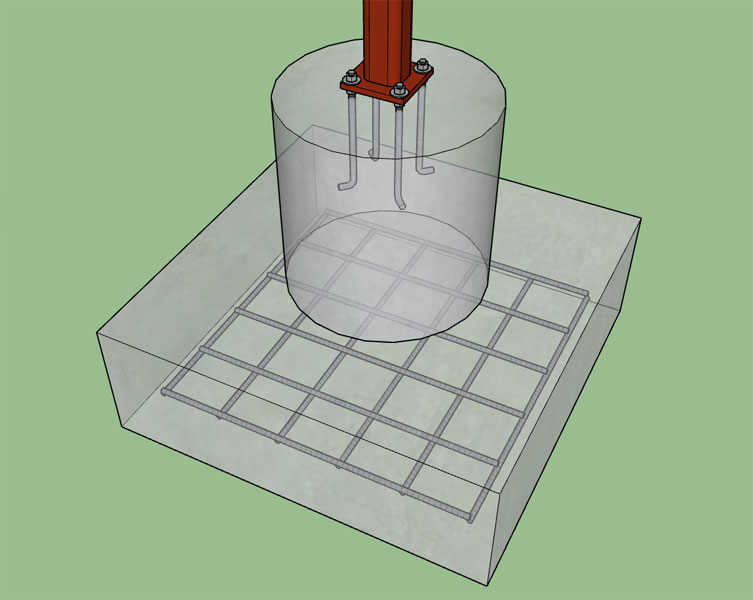

I've been contemplating using the Simpson Strong-Tie post caps and bases as provide in the warehouse but I'm worried that the polygon count is too high. I may have to generate my own dumbed down versions.
I will start with wood posts as an option with the following sub-options for the wood post:
Post Size: 4x4, 4x6, 6x6, 6x8, 8x8
Post Height (in.)
Post Base: None, ABA, ABU, ABW, CBSQ
Post Cap: None, CCQ, ECCQ
Post Rotation: 0, 90, 180, 270
I also plan on having the option for steel posts with the following sub-options:
Post Size: HSS4x4x1/2, HSS4x4x3/8, HSS 4x4x1/4, HSS3x3x3/8 etc... (round and square tube)
Post Height (in.)
Base Plate Size (in.) - square shape L x L
Base Plate Thickness (in.)
Base Plate Hole Dia. (in.): 1/4, 3/8, 1/2, 5/8 (4 bolts per baseplate)
Vert. Offset (in.) - for non-shrink grout
Post Cap: Not sure what to do with this yet.
Post Rotation: 0, 90, 180, 270


I've been contemplating using the Simpson Strong-Tie post caps and bases as provide in the warehouse but I'm worried that the polygon count is too high. I may have to generate my own dumbed down versions.
#2141
Medeek Foundation Plugin / Re: Development and Updates for the Medeek Foundation Plugin
June 03, 2017, 11:59:09 AM
- Added "FPSF" option to rectangular stemwall foundations.


#2142
Medeek Foundation Plugin / Re: Development and Updates for the Medeek Foundation Plugin
June 03, 2017, 01:30:10 AM
Version 1.1.3 - 06.03.2017
- Added "FPSF" option to rectangular slab-on-grade foundations.
- Added an insulation layer in the global settings under the "Layers" tab.

- Added "FPSF" option to rectangular slab-on-grade foundations.
- Added an insulation layer in the global settings under the "Layers" tab.

#2143
Medeek Foundation Plugin / Re: Development and Updates for the Medeek Foundation Plugin
June 01, 2017, 07:57:24 PM
An irregular shaped FPSF, note the 135 deg. corners. Once this angle becomes greater than 135 degrees I would probably just treat it the same as a straight wall.

View model here:
https://3dwarehouse.sketchup.com/model/bfcf8f49-0e4e-4932-a42c-06121a20fd73/FPSF2

View model here:
https://3dwarehouse.sketchup.com/model/bfcf8f49-0e4e-4932-a42c-06121a20fd73/FPSF2
#2144
Medeek Foundation Plugin / Re: Development and Updates for the Medeek Foundation Plugin
May 31, 2017, 09:59:11 PMAn FPSF with 2" foam insulation along the wall and vertically. 2.5" foam insulation at the corners with the following horizontal dimensions:
A = 12"
B = 24"
C = 40"

The rectangle foundation is easy, the polygon shaped foundation will be more challenging.
View model here:
https://3dwarehouse.sketchup.com/model/ab622b36-cc2f-43f8-baa4-f93ceec80741/FPSF
#2145
Medeek Foundation Plugin / Re: Development and Updates for the Medeek Foundation Plugin
May 31, 2017, 08:06:24 AM
Up until now I have not considered adding insulation but it probably would not be too hard to add in. I will do more research on FPSF.
